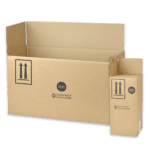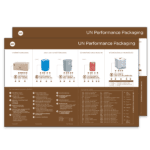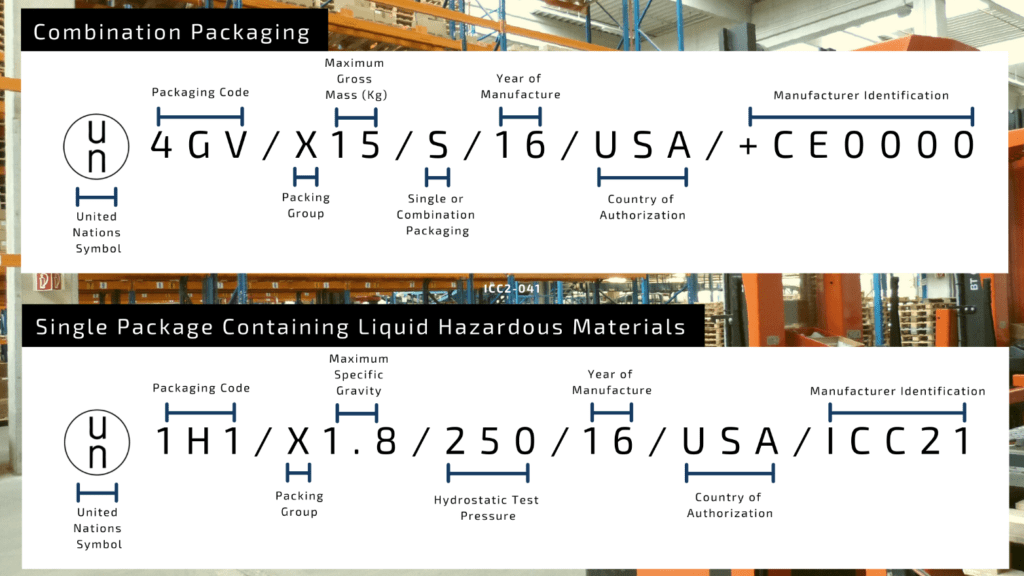This post was originally published in November 2020 and has been updated in April 2022 for accuracy.
Shipping hazardous materials requires them to be in compliance with UN standards. This means hazardous material needs to be properly classified, described, packaged, marked, labeled, and in condition for shipment as required or authorized by applicable federal requirements.
At ICC our UN packaging solutions meet or exceed DOT 49 CFR, IATA, ICAO, IMDG, TDG, FedEx, and UPS requirements.
Understanding UN Markings
UN markings comprise a series of codes separated by slashes that provide relevant information about the package being shipped. UN markings start with the UN symbol followed by codes that identify the following:
- Package Type
- Material
- Category
- Packing Group
- Maximum Gross Mass/Specific Gravity
- Single or Combination Packaging/Hydrostatic Test Pressure
- Year of Manufacture
- Location of Manufacturer
- Manufacturer Code
- Minimum Thickness
- Year of Reconditioning
- Month of Manufacture
- Stacking Test Load
- Supplemental Packaging Code
United Nations Symbol: UN letters must be in circle; or on a metal package only embossed
Packaging Code: Designates the type of packaging and material of construction. EX: 4 [container type] G [material] V [variation package]
Packing Group: This refers to the hazard level of the package.
- X= PG I, II, III
- Y= PG II or III
- Z= PG III only
Maximum Gross Mass: Maximum gross mass measured in kilograms.
Maximum Specific Gravity: Single packages that contain liquids must be marked with the specific gravity rounded to the first decimal.
S- Designates that the packaging is certified to contain inner packaging (is a combination package); or is a single packaging intended to contain solids.
Hydrostatic Test Pressure: Internal hydrostatic test pressure in kilopascals specifies that a single packaging is designed for liquids.
Year of Manufacture: Last two digits of the year of manufacture.
Country of Authorization: Country designation code where the package is manufactured and marked.
Manufacturer Identification: Code for the packaging manufacturer or certification agency.
ICC offers a UN Performance Packaging guide that explains symbols, packaging codes, performance levels, and the difference between markings for liquids, solids, and combination packaging.
If you have any questions regarding UN packaging and want to know if this is the right packaging option for you, contact us today!
We have all the products, services and training you need to ensure your staff is properly trained and informed.
 4G UN Boxes – Combination |
 4GV UN Boxes – Variation |
 UN Packaging Posters & Charts |








 ICC USA
ICC USA ICC Canada
ICC Canada